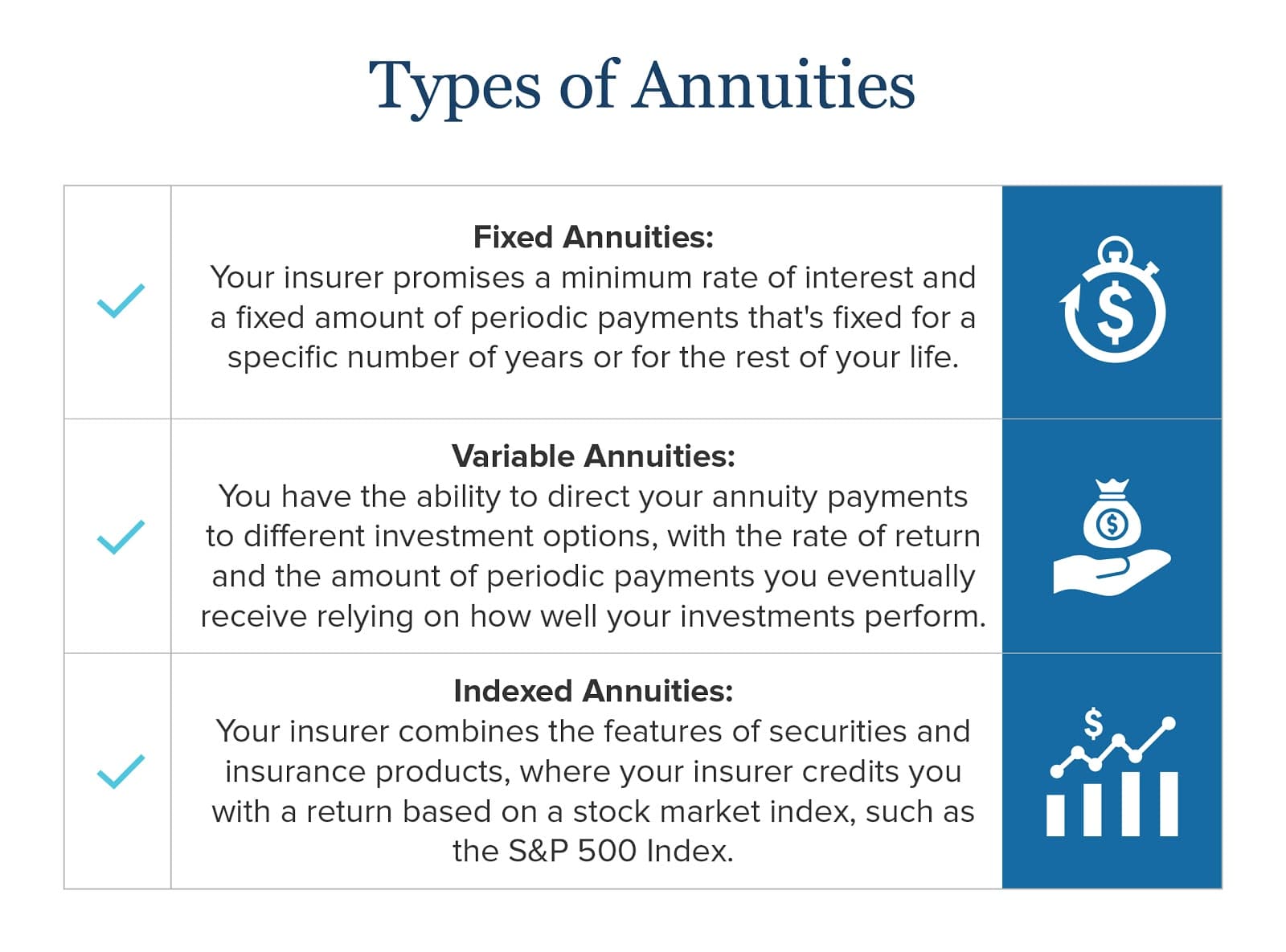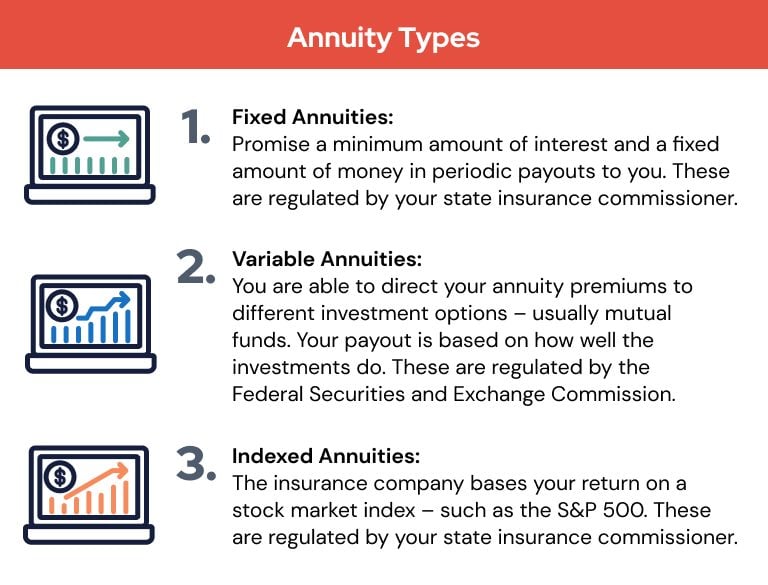All Categories
Featured
Table of Contents
Simply as with a dealt with annuity, the proprietor of a variable annuity pays an insurance provider a round figure or collection of repayments in exchange for the assurance of a series of future settlements in return. Yet as stated over, while a repaired annuity grows at an assured, consistent rate, a variable annuity expands at a variable rate that depends upon the efficiency of the underlying investments, called sub-accounts.

Throughout the accumulation stage, possessions spent in variable annuity sub-accounts expand on a tax-deferred basis and are exhausted only when the contract proprietor withdraws those incomes from the account. After the build-up phase comes the earnings stage. In time, variable annuity assets need to in theory increase in value until the contract proprietor determines she or he want to begin withdrawing cash from the account.
One of the most considerable problem that variable annuities generally present is high price. Variable annuities have several layers of costs and costs that can, in aggregate, develop a drag of approximately 3-4% of the contract's worth every year. Below are one of the most typical fees related to variable annuities. This cost makes up the insurance company for the threat that it assumes under the regards to the contract.
Analyzing Fixed Vs Variable Annuities A Comprehensive Guide to Immediate Fixed Annuity Vs Variable Annuity What Is Indexed Annuity Vs Fixed Annuity? Pros and Cons of Various Financial Options Why Fixed Income Annuity Vs Variable Annuity Is Worth Considering Pros And Cons Of Fixed Annuity And Variable Annuity: Simplified Key Differences Between Retirement Income Fixed Vs Variable Annuity Understanding the Risks of Long-Term Investments Who Should Consider Variable Annuity Vs Fixed Annuity? Tips for Choosing the Best Investment Strategy FAQs About Fixed Income Annuity Vs Variable Annuity Common Mistakes to Avoid When Choosing a Financial Strategy Financial Planning Simplified: Understanding Variable Annuity Vs Fixed Annuity A Beginner’s Guide to Fixed Vs Variable Annuity Pros And Cons A Closer Look at Fixed Vs Variable Annuity
M&E expense charges are calculated as a portion of the agreement worth Annuity companies pass on recordkeeping and various other administrative expenses to the contract owner. This can be in the kind of a flat annual cost or a portion of the agreement worth. Administrative costs might be consisted of as part of the M&E threat charge or may be examined individually.
These fees can vary from 0.1% for easy funds to 1.5% or even more for proactively managed funds. Annuity contracts can be personalized in a number of ways to offer the specific requirements of the agreement owner. Some typical variable annuity motorcyclists include assured minimum build-up advantage (GMAB), assured minimum withdrawal advantage (GMWB), and ensured minimal earnings benefit (GMIB).

Variable annuity payments offer no such tax obligation reduction. Variable annuities tend to be extremely ineffective lorries for passing wide range to the next generation due to the fact that they do not enjoy a cost-basis modification when the initial agreement proprietor passes away. When the owner of a taxable financial investment account dies, the price bases of the investments held in the account are gotten used to reflect the marketplace costs of those investments at the time of the proprietor's fatality.
Highlighting Choosing Between Fixed Annuity And Variable Annuity A Closer Look at Variable Annuity Vs Fixed Indexed Annuity Breaking Down the Basics of Indexed Annuity Vs Fixed Annuity Advantages and Disadvantages of Fixed Index Annuity Vs Variable Annuities Why Immediate Fixed Annuity Vs Variable Annuity Can Impact Your Future How to Compare Different Investment Plans: How It Works Key Differences Between Fixed Income Annuity Vs Variable Annuity Understanding the Risks of Long-Term Investments Who Should Consider Strategic Financial Planning? Tips for Choosing Annuities Fixed Vs Variable FAQs About Pros And Cons Of Fixed Annuity And Variable Annuity Common Mistakes to Avoid When Choosing Fixed Annuity Vs Equity-linked Variable Annuity Financial Planning Simplified: Understanding Your Options A Beginner’s Guide to Smart Investment Decisions A Closer Look at How to Build a Retirement Plan
Beneficiaries can acquire a taxable investment profile with a "tidy slate" from a tax obligation perspective. Such is not the situation with variable annuities. Investments held within a variable annuity do not receive a cost-basis adjustment when the initial owner of the annuity passes away. This indicates that any accumulated unrealized gains will certainly be passed on to the annuity proprietor's beneficiaries, along with the linked tax obligation burden.
One significant concern connected to variable annuities is the potential for disputes of passion that may exist on the component of annuity salesmen. Unlike a financial consultant, who has a fiduciary obligation to make investment choices that benefit the customer, an insurance policy broker has no such fiduciary obligation. Annuity sales are highly lucrative for the insurance specialists who sell them due to high upfront sales compensations.

Several variable annuity agreements contain language which places a cap on the percent of gain that can be experienced by specific sub-accounts. These caps protect against the annuity proprietor from totally taking part in a section of gains that might otherwise be appreciated in years in which markets create significant returns. From an outsider's point of view, it would certainly appear that financiers are trading a cap on investment returns for the aforementioned assured floor on investment returns.
As noted over, surrender fees can drastically limit an annuity owner's capability to move assets out of an annuity in the very early years of the agreement. Further, while many variable annuities allow contract proprietors to take out a defined quantity throughout the build-up stage, withdrawals beyond this amount generally result in a company-imposed fee.
Withdrawals made from a set rate of interest rate financial investment option could also experience a "market price change" or MVA. An MVA readjusts the worth of the withdrawal to show any type of modifications in rates of interest from the time that the cash was purchased the fixed-rate choice to the moment that it was taken out.

Rather usually, also the salesmen that market them do not completely comprehend how they work, and so salesmen often exploit a buyer's emotions to sell variable annuities as opposed to the benefits and suitability of the items themselves. Our team believe that capitalists ought to totally recognize what they possess and just how much they are paying to possess it.
Highlighting the Key Features of Long-Term Investments Key Insights on Variable Vs Fixed Annuity What Is the Best Retirement Option? Advantages and Disadvantages of Different Retirement Plans Why Deferred Annuity Vs Variable Annuity Is Worth Considering How to Compare Different Investment Plans: Explained in Detail Key Differences Between Different Financial Strategies Understanding the Risks of Long-Term Investments Who Should Consider Fixed Income Annuity Vs Variable Annuity? Tips for Choosing the Best Investment Strategy FAQs About Planning Your Financial Future Common Mistakes to Avoid When Choosing a Financial Strategy Financial Planning Simplified: Understanding Your Options A Beginner’s Guide to Smart Investment Decisions A Closer Look at How to Build a Retirement Plan
Nonetheless, the very same can not be said for variable annuity possessions kept in fixed-rate financial investments. These assets lawfully come from the insurer and would certainly for that reason go to threat if the business were to stop working. Any type of assurances that the insurance policy company has agreed to provide, such as an ensured minimal revenue advantage, would be in question in the event of a business failure.
Prospective buyers of variable annuities ought to recognize and think about the economic condition of the releasing insurance company before getting in right into an annuity agreement. While the benefits and drawbacks of numerous kinds of annuities can be discussed, the real issue bordering annuities is that of suitability.
As the saying goes: "Purchaser beware!" This article is prepared by Pekin Hardy Strauss, Inc. Retirement planning with annuities. ("Pekin Hardy," dba Pekin Hardy Strauss Wealth Administration) for informative purposes only and is not planned as a deal or solicitation for company. The info and information in this post does not make up lawful, tax obligation, bookkeeping, investment, or other professional recommendations
Table of Contents
Latest Posts
Decoding Annuities Fixed Vs Variable A Comprehensive Guide to Variable Vs Fixed Annuity What Is Variable Annuity Vs Fixed Annuity? Advantages and Disadvantages of Different Retirement Plans Why Choosi
Understanding Annuities Variable Vs Fixed A Closer Look at Indexed Annuity Vs Fixed Annuity Defining the Right Financial Strategy Pros and Cons of Fixed Index Annuity Vs Variable Annuities Why Choosin
Analyzing Strategic Retirement Planning Key Insights on Retirement Income Fixed Vs Variable Annuity Defining Annuities Variable Vs Fixed Benefits of Variable Annuities Vs Fixed Annuities Why Choosing
More
Latest Posts